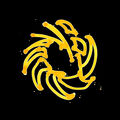Template:Selected anniversaries/January 1: Difference between revisions
No edit summary |
No edit summary |
||
| Line 72: | Line 72: | ||
||1933: Henry Harrison Chase Dunwoody dies. Known in his own time for his work with the Army’s Weather Bureau, Dunwoody invented the carborundum radio detector in 1906. It was the first practical mineral radio wave detector and the first commercial semiconductor device. Pic. | ||1933: Henry Harrison Chase Dunwoody dies. Known in his own time for his work with the Army’s Weather Bureau, Dunwoody invented the carborundum radio detector in 1906. It was the first practical mineral radio wave detector and the first commercial semiconductor device. Pic. | ||
File:Reddy Kilowatt US patent picture 1933.jpg|link=Reddy Kilowatt (nonfiction)|1933: [[Reddy Kilowatt (nonfiction)|Ready Kilowatt]] makes cameo appearance in ''[[Dard Hunter Versus the Shape Thief]]''. | |File:Reddy Kilowatt US patent picture 1933.jpg|link=Reddy Kilowatt (nonfiction)|1933: [[Reddy Kilowatt (nonfiction)|Ready Kilowatt]] makes cameo appearance in ''[[Dard Hunter Versus the Shape Thief]]''. | ||
||1947: Walter Kaufmann dies ... physicist. He is best known for the first experimental proof of the velocity dependence of mass, which was an important contribution to the development of modern physics, including special relativity. Pic. | ||1947: Walter Kaufmann dies ... physicist. He is best known for the first experimental proof of the velocity dependence of mass, which was an important contribution to the development of modern physics, including special relativity. Pic. | ||
| Line 90: | Line 90: | ||
||1995: The Draupner wave in the North Sea in Norway is detected, confirming the existence of freak waves. | ||1995: The Draupner wave in the North Sea in Norway is detected, confirming the existence of freak waves. | ||
||1995: Eugene Wigner dies ... physicist and mathematician, Nobel Prize laureate | ||1995: Eugene Wigner dies ... physicist and mathematician, Nobel Prize laureate. | ||
||1996: Arthur Louis Hugo Rudolph dies ... rocket engineer who was a leader of the effort to develop the V-2 rocket for Nazi Germany. After the war, the United States Government's Office of Strategic Services (OSS) brought him to the U.S. as part of the clandestine Operation Paperclip, where he became one of the main developers of the U.S. space program. He worked within the U.S. Army and NASA, where he managed the development of several systems, including the Pershing missile and the Saturn V Moon rocket. Pic. | ||1996: Arthur Louis Hugo Rudolph dies ... rocket engineer who was a leader of the effort to develop the V-2 rocket for Nazi Germany. After the war, the United States Government's Office of Strategic Services (OSS) brought him to the U.S. as part of the clandestine Operation Paperclip, where he became one of the main developers of the U.S. space program. He worked within the U.S. Army and NASA, where he managed the development of several systems, including the Pershing missile and the Saturn V Moon rocket. Pic. | ||
Revision as of 19:07, 1 January 2019
1548: Dominican friar, philosopher, mathematician, poet, and cosmological theorist Giordano Bruno born. He will be burned at the stake (17 February 1600).
1671: Mathematician Ehrenfried Walther von Tschirnhaus removes intermediate terms from a given algebraic equation using Gnomon algorithm techniques.

1748: Mathematician Johann Bernouli dies. He made important contributions to infinitesimal calculus.
1766: Priest, mathematician, and astronomer Giuseppe Piazzi uses Gnomon algorithm to forecast theoretical existence of dwarf planet Ceres.
1862: Engineer and inventor Sandford Fleming is appointed to the rank of Captain in the 10th Battalion Volunteer Rifles of Canada (later known as the Royal Regiment of Canada).
1893: telephone switchboard technology modified to send and receive Gnomon algorithm data.
1894: Physicist, mathematician, and academic Satyendra Nath Bose born. His work on quantum mechanics will provide the foundation for Bose–Einstein statistics and the theory of the Bose–Einstein condensate.
1962: Brainiac Explains lecture series wins Pulitzer Prize.
1978: Mathematician and engineer Agner Krarup Erlang born. He will invent the fields of traffic engineering, queueing theory, and telephone networks analysis.
2018: Golden Spiral declared Picture of the Year by the citizens of New Minneapolis, Canada.








